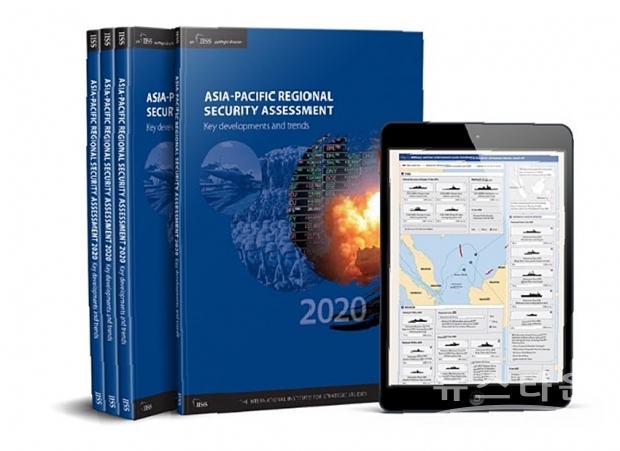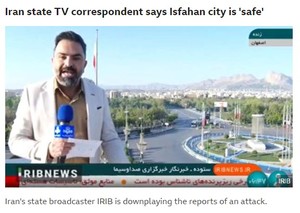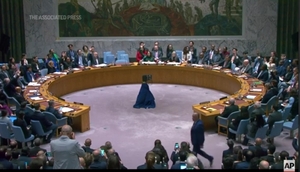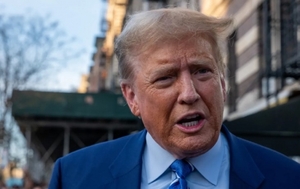- 중국 시진핑 주석이 문재인 대통령의 중재자 역할 빼앗아 가

세계적인 외교 싱크탱크인 영국의 국제전략문제연구소(IISS)가 최근 펴낸 역내 안보평가보고서인 연례보고서를 발표하고, 특히 미국과 중국의 신냉전 상황이 앞으로 결정적인 변수로 작용할 것으로 보고, 대북외교는 교착상태가 심화될 것이라는 전망을 내놓았다.
5일(현지시각) IISS는 연례보고서인 “2020년 아시아 태평양 역내 안보평가(The Asia-Pacific Regional Security Assessment 2020)”를 발표하고, “지난해 초까지만 해도 존재했던 한반도 외교를 둘러싼 낙관적 전망이 대부분 소멸한 상태”라고 지적했다.
IISS 보고서는 "김정은 조선노동당위원장의 집권 이후, 대외관계가 6자 회담 핵심 당사국 정상들과의 일 대 일 관계에 치중해왔다는 점에서 표면적으로는 아버지인 김정일 시대의 전형적인 ‘분열과 정복’ 전략과 일맥상통한 것으로 비쳐질 수도 있다“고 자적하고, ”하지만, 김정은 위원장의 한국, 미국, 중국 정상과의 개별적 관여 시도에도, 이들 3국간 내재적 상호관계 때문에 외교적으로는 교착국면에 빠졌다“고 진단했다.
오는 6월 12일이 되면 지난 2018년 이날 싱가포르에서 역사적인 북미 정상회담이 열리면서 한반도에 극적인 평화무드가 정착될 수 있다는 희망이 가득했으나, 싱가포르 회단 2년이 지난 지금의 북미관계는 정상회담 이전의 관계로 되돌아갔다.
미국의 대북 정책의 근간인 북한 비핵화가 우선이라는 입장에서 한 발짝도 물러서지 않자 북한이 그동안 소원했던 중국과 적극적인 밀원관계 복원에 나서면서 한국의 역할의 무력화가 되는 직접적인 계기가 됐으며, 결과적으로 시진핑 중국 국가주석에게 한반도 중재자 역할을 빼앗기게 됐다고 보고서는 진단했다.
김정은 위원장과 시진핑 주석의 관계 복원은 한국의 문재인 대통령의 중재자 역할을 무력화시키는 직접적인 계기가 되었으며, 또 북한과 미국 사이의 직접 소통로가 가동되면서 남북대화의 가치는 급격히 떨어졌고, 북한의 비핵화 협상을 둘러싸고 북미 관계가 송원해지자 김정은 위원장은 시진핑 주석에 달려가 조언을 구하고, 경제적 지원을 호소하고 있는 상태라는 것이다.
그러면서 보고서는 “앞으로 대북 외교 관계의 핵심이 될 미-중 관계가 신냉전이 돌입하고 있는 상황에서는 당분간 대화는 교착국면이 심화될 수밖에 없는 상황”이라고 내다봤다.
이 같이 북중 밀착, 북미 직접 소통로 구축 등 이외에 문재인 정부의 경우, 2019년 2월 하순 베트남 하노이 회담 이후 대북 외교적 성과 부재에 경제, 양성 평등, 환경 문제 등 한국 내 도전 과제들로 인해 대통령지지도 쇠락의 주요 원인이 되었고, 가장 중요한 것은 문제인 대통령의 5년 임기 중반을 넘기면서 시간에 몰리고 있다는 점이라고 보고서는 지적했다.
남북관계는 여전히 2018년 6월 이후 짧은 기간의 평화 시기를 다시 맞이할 가능성도 점점 더 어려워지고 있다는 점이다. 문제는 남북한 간의 대화가 성사된다 할지라도 북미 사이에서 향배가 결정될 것이라는 분석이다. 한국 정부의 역할은 역시 제한적이라는 견해이다.
보고서가 나온 6월 9일 현재 북한의 김여정 제 1부부장이 9일 12시부터 남국간의 모든 채널을 차단하겠다고 밝히고, 나아가 지금까지의 ‘대남사업’을 대적사업‘으로 성격을 전환하겠으며, 남한 측과는 어떠한 접촉도 없을 것이라고 조선중앙통신은 이날 보도했다. 이날 북한의 조선중앙통신의 보도대로라면, 남북대화는 당분가 어려워 질 것으로 보인다. 보고서가 전망한 것처럼 “설령 남북대화가 있다할지라도”라는 전제가 사라지는 형국을 맞이하고 있다.
또 IISS 보고서는 문재인 대통령이 주창한 ‘한반도 중재자’역할은 시진핑 중국 국가주석에게 뺏긴 상태이며, 북중 관계가 지속적으로 심화될지의 여부는 전적으로 앞으로 미-중 관계에 달려 있다고 지적했다.
이어 보고서는 북한은 최대 60기의 핵무기를 보유하고 있을 것이라고 추정하고, 매년 5기 이상을 생산할 능력이라며, 미국과 중국의 경재 심화는 비핵화 공조에도 상당한 변수가 될 수밖에 없다고 풀이했다.
북한은 이미 20~60기의 핵무기를 보유한 것으로 추정되는 가운데, 플루토늄 기반 핵시설인 영변과 베일에 가린 우라늄 기반 시설에서, 매년 최소 5~6기의 무기를 생산하고 있는 것으로 추정한다고 밝히고, 미국과 중국은 이 문제와 관련해서, 전통적으로 상호 이해에 기초한 협력적 관계를 유지해왔다고 분석했다.
보고서는 현재 진행되고 있는 미-중 관계 악화의 주된 원인이 “구조적인 문제”이기 때문에, 미국과 중국 어느 한 쪽이 정치, 경제 체계의 변화를 보이더라도, 경쟁에 기초한 관계는 지속적으로 심화될 것으로 내다봤다.
미국의 트럼프 정부의 중국에 대한 견제 정책은 변함이 없을 것으로 보인다. 따라서 대중견제 핵심 동맹은 한국, 일본, 호주 등이지만 동맹에 대한 불신론이 변수로 작용할 수 있다고 보고서는 지적했다.
나아가 북한의 핵이 한반도의 셈법에 변화를 야기시킬 수 있으며, 확장 억지력에 대한 신뢰도도 하락할 수 있다고 보도서는 평가하고 있다.
보고서는 미국의 인도-태평양 전략의 핵심 3개의 축으로 한국, 일본, 호주를 꼽으면서도 방위비분담금 문제 등 트럼프 대통령의 동맹 불신 기조가 앞으로의 변수로 작용할 수 있다고 내다보고, 특히 한미 동맹관계가 직면하고 있는 가장 논쟁적 도전으로 ‘방위비 분담금 문제’와 ‘대북 확장억지력 신뢰 하락 문제’를 꼽았다.
이어 보고서는 “미국의 한반도 확장억지력 계산법이 미국 본토와 인도태평양군 기지를 겨냥한 북한 김정은 위원장의 신뢰할 수 있는 핵 투사 역량의 가차 없는 추구로 인해 급변하게 됐다” 면서, “북한이 2018년 남북정상회담에 반영된 비핵화 열망에서 벗어난 채, 지속적인 미사일 개발을 추진하고 있다는 점”을 지적했다.
그러면서 보고서는 “한국과 일본의 정책 당국자들은 위험을 감수하려는 미국의 방위공약 의지에 의문을 나타내기 시작했다”고 분석했다.
나아가 미국의 중거리 미사일 역내 배치 가능성이 비쳐지면서 중국의 민감하고 격렬한 반발이 미중 관계의 또다른 갈등 구조이며, 그 중간에 한국의 입장이 진퇴양난에 빠지게 된다는 점이다.
미국이 중거리핵전력조약(INF)에서 탈퇴한 가장 큰 이유는 체결 당사국인 러시아가 아닌 역내 군비증강을 지속적으로 해오고 있는 중국을 견제하기 위한 목적이라고 분명하게 밝히고 있다. 이에 따라 미국은 중거리 미사일 성능 개선을 위한 노력을 경주하고 있고, 중거리 마사일의 한국 지상 배치 문제가 부상하고 있다.
INF를 탈퇴해버린 미국은 아시아 태평양 지역에 중국을 겨냥한 중거리 미사일을 배치 할 수 있는 상황이 돼, 중국의 협박 능력을 약화시키기 위한 계산법인 반영됐다는 것이다. 당연히 중국은 한국, 일본, 호주에 중거리 미사일 배치를 결연히 반대하며, 보고조치를 취하겠다고 밝히고 있어, 역내 갈등의 씨앗이 될 것으로 전망된다고 보고서는 말했다.
참고로 아래는 IISS 영문 보고서 요약문이다.
Introduction
The Asia-Pacific Regional Security Assessment 2020 investigates US–China great-power competition, US alliances and partnerships, the implications for Asia of the end of the INF Treaty, the breakdown in Japan–South Korea relations, the diplomatic deadlock on the Korean Peninsula and the role of regional and extra-regional middle powers like Australia, Indonesia and European actors.
The International Institute for Strategic Studies (IISS) had planned to convene its 19th Shangri-La Dialogue (SLD), the Asia-Pacific’s leading annual intergovernmental defence and security summit, in Singapore from 5 to 7 June 2020. The event has been held every year since its launch in 2002, so it was a matter of real regret when – in light of the serious challenges posed by the COVID-19 pandemic – it was decided in late March 2020 not to convene the Dialogue. However, later in 2020 we will begin work to ensure an exceptionally strong IISS Shangri-La Dialogue in mid-2021, and a successful 9th IISS Fullerton Forum: Shangri-La Dialogue Sherpa Meeting for senior officials and officers earlier that year.
As well as planning for the next major events in the SLD process, the IISS is pleased to be able to continue its momentum with this seventh edition of the Asia-Pacific Regional Security Assessment, part of the IISS Strategic Dossiers series. Each chapter in this book bolsters focused, empirically based analysis with maps, graphs, charts and tables. Like its predecessors, the 2020 dossier investigates a wide range of important regional-security questions, complementing the analysis of Asian strategic, military and security issues in the Institute’s annual Strategic Survey: The Annual Assessment of Geopolitics, The Military Balance and Armed Conflict Survey. For the first time, chapters in this Regional Security Assessment carry author bylines.
The themes of the chapters that make up this volume have all featured in Plenary and Special Session discussions at recent IISS Shangri-La Dialogue and Fullerton Forum meetings and will be highly relevant to the substance of the next SLD in 2021. Reflecting the reality that major-power competition in the region continues to grow, there are important assessments of not only relations between the United States and China, but also of the implications for Asian security of the collapse of the Intermediate-range Nuclear Forces (INF) Treaty, and of the trajectory of Washington’s alliances and security partnerships in the region. One chapter assesses the continuing challenge posed by North Korea’s nuclear-weapons and missile programmes to the security of the US, Japan and South Korea, and the ramifications for Beijing’s relations with Pyongyang.
Several chapters in this Regional Security Assessment also pay considerable attention to the important contributions of middle powers to Asia-Pacific security, with authors investigating Japan’s increasingly assertive regional role; the security implications of worsening relations between Japan and the Republic of Korea (ROK, or South Korea); Indonesian policy towards the South China Sea; Australia’s evolving security and defence outlook; and the tentative efforts by the European Union and some individual European countries to enhance their security roles in the region.
The major powers and regional security
Relations between the US and China remain central to the equilibrium that underpins security and stability in the Asia-Pacific or, as the US government and some others now call it, the ‘Indo-Pacific’. However, as Bonnie S. Glaser emphasises in this volume’s opening chapter, the deterioration of the crucially important relationship between the world’s two most powerful countries has ‘deepened and accelerated’ during Donald Trump’s presidency. While the US leader’s attention – and that of the media – has been focused on US–China trade, there have also been important bilateral differences in the security sphere, particularly in relation to the South China Sea and Taiwan. The latter has emerged as a particularly dangerous potential flashpoint and Glaser highlights the view of some observers that ‘the risk of a military crisis [is] likely to increase dangerously in the coming years’. Regional states have responded to escalating competition between the US and China in diverse and often complex ways. Common elements of these responses include support for parts of Trump’s pushback against Beijing’s assertiveness; a fear of antagonising China by overtly supporting US positions; expressions of concern over the security and economic ramifications of growing US–China tensions; voicing support for multilateral cooperation; and efforts to strengthen security cooperation among regional states themselves. Glaser argues that structural factors underlie deteriorating Sino-American relations, and that the two sides’ policies are ‘exacerbating suspicions and stoking tensions’. However, she also writes that military confrontation is not inevitable: more effective dialogue mechanisms, combined with ‘improved risk-reduction and crisis-avoidance measures’, would enable the US and China to manage their competition better.
One emerging area of competition between the US and China involves missile deployment. The Institute’s Douglas Barrie, Michael Elleman and Meia Nouwens focus on the implications for Asia of the end of the INF Treaty. While Russia’s alleged non-compliance was the stated cause of the treaty’s collapse, President Trump has argued that the US has also been disadvantaged by China’s deployment of intermediate-range missiles. As the authors point out, the end of the INF Treaty will allow Washington ‘to develop, should it wish, ground-launched cruise and ballistic missiles that could be deployed in the Indo-Pacific’. However, they also maintain that ‘it is far from certain that ground-based US missiles would be either more cost-effective or more survivable than sea- or air-delivered missiles’. And while US Secretary of Defense Mark Esper has spoken of deploying ground-based missiles in the region ‘sooner rather than later’, practical challenges mean that this could take years rather than months. In the meantime, China has rejected any notion that it should join efforts to create a multilateral successor to the INF Treaty: compliance with restrictions equivalent to those in the treaty would imply the need to give up as much as 95% of its current ballistic- and cruise-missile inventory. Beijing has also responded with strong rhetoric to US plans to deploy ground-based missiles, which might lead to an action–reaction cycle of weapons development and deployment by the two powers. In sum, the end of the INF Treaty threatens to worsen an already tense regional security predicament in East Asia. The best way of avoiding a worst-case outcome might be a wider approach to regional arms control, which would involve the US making concessions beyond forgoing the deployment of ground-based missiles and China demonstrating a greater willingness to engage in strategic and regional arms control.
As William Tow points out in his chapter, the United States’ alliances and security partnerships in the region remain central to its efforts to sustain its national-security interests and ‘respond to the rise of China, North Korean nuclear ambitions and other regional threats’. However, the Trump administration has signalled its departure from established policy towards the region, claiming that existing arrangements for trade with a range of Asian countries work to the disadvantage of the US, and that allies (particularly Japan and South Korea) should make considerably greater commitments to defence burden-sharing. In addition, the administration’s tendency to overlook allies’ interests in responding to the threat from North Korea’s nuclear-weapon and missile programmes has worried Tokyo and Seoul. However, the Trump administration’s transactional and sometimes unilateral approach is not the only major challenge to US alliances and partnerships: a ‘concerted campaign’ by Beijing to undermine these relationships has accompanied China’s growing economic and military assertiveness. The alliances with Australia, Japan and South Korea remain essentially strong despite differences with Washington, but China has succeeded in gaining influence over the two US allies in Southeast Asia, the Philippines and Thailand. Nevertheless, in parallel with its existing alliances, the US has cultivated several significant security partnerships in Southeast Asia – notably with Indonesia, Singapore and Vietnam – that may help to compensate for its weakening alliances there. Meanwhile, the ‘major defence partnership’ with India is potentially of great strategic significance, though considerable differences of perspective continue to impede its development. Overall, allies and partners of the US still view its power as ‘a vital component of the regional security order’ and continue to ‘encourage and facilitate’ its engagement in the region.
North Korea’s nuclear and missile programmes have continued to pose a major threat to US security interests. In May 2019, Pyongyang resumed testing short-range missiles and reportedly stepped up its efforts to develop a submarine-launched ballistic-missile capability while simultaneously continuing its nuclear-weapons programme. In ‘Diplomacy and North Korea’, Brendan Taylor writes that ‘much of the optimism which enveloped Korean Peninsula diplomacy at the start of 2019 has dissipated’. While the historic meeting in Singapore between Trump and North Korean leader Kim Jong-un in June 2018 generated high expectations, the second and third summit meetings in February and June 2019 failed to produce progress towards resolving substantive issues. Initial working-level talks in October 2019 ended when North Korean officials purportedly ‘stormed out’. The main problem was the two sides’ widely divergent understanding of the meaning of the ‘complete denuclearization of the Korean Peninsula’, which Trump and Kim had agreed on as their joint target at their initial summit. Differences between the two sides’ negotiation styles also impeded fruitful talks, as did domestic political considerations for both leaders. Dialogue between Kim and South Korean President Moon Jae-in also stalled during 2019, mainly because Washington insisted that ‘Seoul remain in lockstep with its maximum-pressure campaign’, thereby preventing Moon from advancing the cooperative measures that he and Kim had discussed in 2018. In these circumstances of failing dialogue between the US and North Korea and also between the two Koreas, relations between Beijing and Pyongyang strengthened during 2019. Taylor realistically concludes that the Korean Peninsula’s ‘deadlock will not easily be broken’ in the near term.
Roles of the middle powers
Against a background of intensifying major-power competition in the region, Japan has continued to become a more assertive security actor. Writing on ‘Japan and Indo-Pacific Security’, Christopher W. Hughes pinpoints the Abe administration’s concern that China is seeking to use mechanisms such as the Asian Infrastructure Investment Bank (AIIB) and the Belt and Road Initiative (BRI) to ‘marginalise’ Japanese and American influence in Asia and, at the bilateral level, ‘to use a growing relationship of asymmetric economic interdependence to exert leverage on Japan’. At the same time, Tokyo is worried that China’s territorial irredentism threatens Japan’s sea lines of communication and even the security of its own littoral and outlying islands. Japan has also faced a pressing ongoing security challenge from North Korea’s nuclear and missile programmes. In response, Prime Minister Abe Shinzo’s government has been notably active in attempting to engage with China while simultaneously balancing Beijing’s growing influence, both ‘through its own diplomatic, economic and military efforts’ and by trying to bolster its alliance with the US. But Hughes concludes that Japan’s achievements have been mixed. While Abe has succeeded in using statecraft to shape the region’s political economy through the Trans-Pacific Partnership (TPP), its successor the Comprehensive and Progressive Agreement for Trans-Pacific Partnership (CPTPP), and the Regional Comprehensive Economic Partnership (RCEP), its success in other areas of foreign and security policy has been less clearly demonstrable. Despite Tokyo’s efforts to increase defence spending, to buy more US defence equipment and to loosen constraints on the Japan Self-Defense Forces’ deployment, the US remains ‘a fickle ally’. At the same time, reaching rapprochements that are likely to endure with China and Russia has proved difficult, as has exerting influence with regards to the challenge from North Korea and managing neuralgic relations with South Korea.
In the context of the ‘downward spiral’ in bilateral relations that began in the second half of 2018, William Choong’s chapter investigates in detail the complex connections and disputes between Japan and the ROK. While the two countries share superficial similarities, a complex and highly contentious shared history clouds their relationship. Two matters have proved particularly troublesome: the dispute over the Dokdo/Takeshima Islands (occupied and administered by South Korea, but claimed by Japan) and the so-called ‘comfort women’ issue. The current downturn in relations was triggered by a November 2018 South Korean court ruling that a Japanese company should compensate South Koreans who had been exploited as wartime forced labour. Soon afterwards, Japan claimed that a South Korean naval vessel had locked its targeting radar onto one of its maritime-patrol aircraft. Subsequently, Japan accused South Korean companies of breaching sanctions on North Korea, and imposed export curbs on high-technology materials to the ROK; Seoul retaliated by removing Japan’s fast-track bilateral trade status and also by announcing its intent to withdraw from the General Security of Military Information Agreement (GSOMIA) with Japan. Choong argues that the prospects for significantly improved bilateral relations are ‘bleak’. Domestic political environments on both sides are charged, and the US has not been willing to focus great attention on mediation between its two Northeast Asian allies. Resumed functional cooperation is unlikely to make a long-term impact unless it is followed by more fundamental efforts to address the historical grievances that underlie the deterioration in relations since 2018.
Southeast Asia is composed of both small and medium powers. Of those countries, large and populous Indonesia has the greatest potential to play a significant role in regional security affairs. However, since 2014 the government of President Joko Widodo, or ‘Jokowi’ as he is widely known, has consciously moved away from its predecessor’s relatively highprofile international posture towards an emphasis on ‘down-to-earth diplomacy’ that prioritises consular services and support for Indonesian exports. Aaron Connelly explains how this change of emphasis has had a particular impact on Jakarta’s policy towards the major regional security challenge impinging on its interests: China’s increasingly prominent forward policy in the South China Sea. Jokowi has emphasised the importance of Chinese investment for Indonesia, and particularly for his own ‘signature initiative’, a national infrastructure programme. This has provided the context for Jakarta, during Jokowi’s presidency, to step back from its previous ‘active role in the resolution of regional disputes, including over the South China Sea’. Instead, Indonesia has become ‘a conservative actor focused on protecting its own narrow interests around the Natuna Islands’. Jokowi’s government has been particularly concerned over foreign vessels’ illegal fishing activities inside Indonesia’s exclusive economic zone. Chinese – along with Vietnamese – vessels posed particular problems. Chinese boats were largely exempted from a policy of sinking illegal fishing vessels, but in 2016 Jokowi assumed a personal role in directing the strengthening of the Natuna Islands’ security after Indonesian Navy ships reacted to intrusions by Chinese fishing boats supported by Chinese Coast Guard (CCG) vessels.
Since late 2019, Jokowi’s second presidential term has seen new challenges in the form of renewed incursions by Chinese fishing vessels supported by the CCG in December, prompting Jakarta to deploy ships, combat aircraft and troops to the Natunas. This in turn led to calls in Indonesia for a ‘new strategy’ on the South China Sea. However, Connelly argues that during his second term Indonesia’s president is likely to prioritise intra-governmental political manoeuvring, domestic economic legislation and plans to build a new capital, and is therefore unlikely to refocus on the challenges for Indonesia posed by China’s rise.
Despite being a relatively small country in terms of its population, Australia plays an important role in regional security owing to its economic prosperity, significant defence capability and close alliance with the US. As Andrew Davies points out in his chapter on ‘Australia’s Security and Defence Outlook’, Australia’s government is acutely conscious of the ‘rapid’ evolution of its strategic environment since its 2016 Defence White Paper. The ‘most threatening geopolitical development’ has been the fast increase in China’s ‘military, economic and political clout’ and its willingness to ‘challenge established international conventions’. There are also doubts over the ‘enduring commitment’ of its US ally to its ‘security-underwriter role’ in Australia’s neighbourhood. An overall increase in the technological sophistication of Asian armed forces prompts the questioning of Canberra’s own security and defence policies. In these circumstances, Australia’s defence ministry is reassessing the ‘strategic underpinnings’ of the white paper, and Davies suggests it is likely that it will find that most of the challenges identified in 2016 have ‘significantly increased in scope or intensity’. While Canberra has already responded to those challenges with increased defence spending and plans to increase Australia’s military capabilities (for example, through a thoroughgoing modernisation of the air-force equipment inventory to create ‘a fully integrated fifth-generation force’), Davies concludes that ‘current plans may well prove inadequate’.
Since the United Kingdom’s withdrawal from ‘east of Suez’ over 50 years ago (which followed slightly earlier French and Dutch retrenchments from the region), no European country or grouping has played a major security role in the Asia-Pacific. This is unlikely to change in the future but, as IISS Shangri-La Dialogue Senior Fellow for Asia-Pacific Security Euan Graham argues in the final chapter in this volume, ‘the European Union and Europe’s two most significant military powers, the France and the United Kingdom, identify a continuing security role in the Asia-Pacific as being in their interests’. Germany and some other European countries are also paying increased attention to the region. Individual European states and the EU are ‘broadly aligned’ in support of the much vaunted ‘rules-based international order’, but ‘duplication and a degree of competition’ hinder effective engagement in regional security. Nonetheless, European defence companies are significant suppliers of military equipment to countries in the region, and the UK and France have stepped up their short-term naval deployments to Asian waters. Although Europe is absent from some existing regional security institutions centred on the Association of Southeast Asian Nations (ASEAN), many regional states welcome European economic, diplomatic and military presences. While some European governments have been keen to bolster the existing Asia-Pacific order, the EU and many of its member states have simultaneously become concerned over China’s strategic intentions towards – and clandestine operations on – their continent, and Beijing’s deepening security relations with Moscow. These developments provide important new reasons for seeing the security of Europe and Asia as interconnected. Graham concludes that ‘EU contributions to security in the Asia-Pacific are likely to remain piecemeal’ and that ‘coordinated and consistent presence operations by member states are a more realistic goal than power projection’. The UK and France could usefully coordinate their military activities in the region, but it is unclear whether Brexit ‘will help or hinder such coordination’.
By April 2020 it was already clear that the Asia-Pacific regional-security agenda was likely to widen further in light of the impact of the COVID-19 pandemic not just on health and human security, but also on economic growth, political stability and foreign policy in regional countries and those states with significant security interests in the region. The pandemic will have undoubtedly significant effects on the defence sector, notably in terms of threatening to undermine armed forces’ operational readiness while simultaneously forcing them to adapt to new roles, and by heightening competition for government-spending allocations. These ramifications will doubtless feature in discussions at the next IISS Fullerton Forum: Shangri-La Dialogue Sherpa Meeting in January 2021, and in Plenary and Special Sessions at the Shangri-La Dialogue later in the year. However, despite having already proved to be perhaps the most dramatic international development since the end of the Second World War, the COVID-19 pandemic seems unlikely to reshape the geopolitics of the Asia-Pacific fundamentally. Questions relating to major-power competition and the roles of other powers, many of which are assessed in detail in this Regional Security Assessment, will continue to provide the main substance for discussion in the Shangri-La Dialogue process, notwithstanding our readiness to incorporate new elements into its agenda. We intend that the essays in this volume will help to inform and stimulate important exchanges on these questions among security policymakers and experts in the Asia-Pacific region and beyond, before the major meetings in the Shangri-La Dialogue process resume at the start of 2021. ///
뉴스타운
뉴스타운TV 구독 및 시청료 후원하기
뉴스타운TV











![[전문] 한덕수 총리, 국립대 의대 입학정원 '조정' 특별브리핑](/news/thumbnail/202404/603856_550803_5225_v150.jpg)














![[특별대담] 제22대 국회의원 선거 자유민주당 인천 서구병 이진기 예비후보](/news/photo/202403/600022_545770_3853.jpg)






![[긴급시국분석] 북한의 내년 4월 총선 전후 기습남침과 좌파들의 내란 및 전민봉기 철저히 대비하라!](/news/thumbnail/202312/592978_536686_4219_v150.jpg)